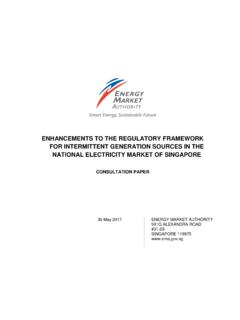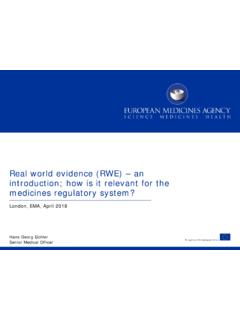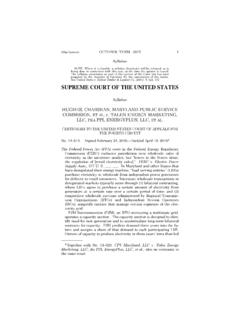Transcription of FAO Country Programming Framework (CPF) Federal …
1 2013- 2017. FAO Country Programming . Framework (CPF) Federal . REPUBLIC OF NIGERIA. FAO- Nigeria 2013- 2017. Table of Contents ACRONYMS AND ABBREVIATIONS III. EXECUTIVE SUMMARY IV. 1 INTRODUCTION 1. BACKGROUND INFORMATION 1. CPF FORMULATION PROCESS AND STRUCTURE OF THE DOCUMENT 1. Country CONTEXT 3. SITUATION OF AGRICULTURE, NATURAL RESOURCES AND ENVIRONMENT 4. 2 AGRICULTURAL INSTITUTIONAL STRUCTURE AND POLICY FRAMEWORKS 8. INSTITUTIONAL STRUCTURE OF NIGERIA'S AGRICULTURAL DEVELOPMENT 8. NIGERIA AGRICULTURAL POLICIES AND STRATEGIES 9. SUMMARY OF GOVERNMENT PRIORITIES RELEVANT FOR FAOS MANDATE 10. 3 FAO'S COMPARATIVE ADVANTAGES AND FAO PRIORITY AREAS 12.
2 FAOS MANDATE AND REGIONAL PRIORITIES 12. FAO AREAS OF EXPERTISE AND COMPETENCE 12. COOPERATION AND SYNERGIES WITH DEVELOPMENT PARTNERS AND OTHER STAKEHOLDERS 14. FAO NIGERIA CPF PRIORITY AREAS 15. 4 Programming FOR RESULTS CPF PRIORITIES AND RESULTS 15. PRIORITY A: SUPPORT FOR NATIONAL FOOD AND NUTRITION SECURITY 15. PRIORITY B: SUPPORT FOR AGRICULTURAL POLICY AND REGULATORY Framework 17. PRIORITY D: SUPPORT FOR SUSTAINABLE MANAGEMENT OF NATURAL RESOURCES 19. PRIORITY E. SUPPORT FOR DISASTER RISK REDUCTION AND EMERGENCY MANAGEMENT 20. ANNEXES 23. ANNEX A: CPF PRIORITY MATRIX 23. ANNEX B: CPF RESULTS MATRIX 2013 2017 24. ANNEX C: CPF RESULTS MATRIX: RESOURCE REQUIREMENTS 2013-2017 32.
3 ANNEX D: FAO ONGOING AND PIPELINE PROJECTS WITHIN THE Framework OF CPF 35. ANNEX E: FAO-CPF CONTRIBUTION'S TO UNDAF III OUTCOMES, 2013-2017 38. ANNEX F: DEVELOPMENT PARTNER (DPS) CURRENT AREAS OF FOCUS IN NIGERIA AGRICULTURE SECTOR: SUMMARY OF FAO/DPS CONSULTATION ON CPF 39. ANNEX G: FAO VISION, MEMBER'S GLOBAL GOALS AND STRATEGIC OBJECTIVES, AND FAO CORE FUNCTIONS 41. ii Acronyms and Abbreviations ACBI African Capacity Building Initiative ATA Agriculture Transformation Agenda CAADP Comprehensive Africa Agriculture Development Programme CPF Country Programme Framework DRM Disaster Risk Management DRR Disaster Risk Reduction FAO Food and Agriculture Organization of the United Nations FAPDA Food and Agriculture Policy Decision Analysis FCT Federal Capital Territory (FCT).
4 FMARD Federal Ministry of Agriculture and Rural Development FMEnv Federal Ministry of Environment FMH Federal Ministry of Health FMWR Federal Ministry of Water Resources FMTI Federal Ministry of Trade and Investment FNS Food and Nutrition Security GDP Gross Domestic Product GoN Government of Nigeria MAFAP Monitoring African Food and Agriculture Policy MAN Manufacture Association of Nigeria MDG Millennium Development Goal NAIP National Agricultural Investment Plan NAQS National Agricultural Quarantine Service NASC National Agricultural Seeds Council NEEDS National Economic Empowerment and Development Strategy NMTIP National Medium Term Investment Plan NMTPF National Medium Term Priority Framework NGO Non-Governmental Organisation NPC National Planning Commission ODA Official Development Assistance OMT Operations Management Team REDD Reducing Emissions from Deforestoration and Forest Degradation UN United Nations UNDAF United Nations Development Assistance Framework UNCT United Nations Country Team UNDAF United Nations Development Assistance Framework UNDP United Nations Development Programme UNEP United Nations Environment Programme UNESCO United Nations Educational.
5 Scientific and Cultural Organization UNICEF United Nations Children Fund UNIDO UN Industrial Development Organization UNOCHA United Nations Office for the Coordination of Humanitarian Affairs UNODC United Nations Office on Drugs and Crime UPOV Union for Protection of New Varieties of Plants USAID United Nations Agency for International Development WB World Bank WCS Wildlife Conservation Society WFP World Food Programme WHO World Health Organization WSMS Water Sector Management Strategy WUAs Water-User Associations iii Executive Summary The Food and Agriculture Organization (FAO) which opened the Nigeria Representation Office in 1978 has been providing unabated support to the Country in the formulation and implementation of policies, strategies, programmes and projects in food, agriculture and natural resources that aim to improve food security and nutrition in a broad-based, equitable and sustainable manner and reduce poverty.
6 In providing this assistance, FAO has always focused on enhancing the livelihood of smallholders, who form the bulk of the rural poor, in a way that is technically, economically, socially and environmentally sustainable. FAO's current field programme in Nigeria is guided by the National Medium Term Priority Framework (renamed to Country Programming Framework , CPF) covering the Programming cycle for 2009-2012. Because the Programming cycle ended in December 2012, the Government of Nigeria formally requested FAO to initiate the preparation of another round of CPF that will further consolidate the achievement of the on-going Nigeria economic transformation agenda.
7 This new CPF for Nigeria describes FAO's medium term assistance priorities and results, derived from nationally defined priorities and objectives, to be achieved over the five-year period of the Country 's Programming cycle (2013-2017). In order to ensure its national ownership, the CPF has been prepared in close collaboration with key Ministries, Departments and Agencies(MDAs) including, among others, the Federal Ministry of Agriculture and Rural Development (FMARD), Federal Ministry of Water Resources, Federal Ministry of Environment (FMEnv) and National Planning Commission (NPC) and other relevant stakeholders namely representatives of the States Ministries of Agriculture and Natural Resources (SMANR), Non- Governmental Organizations (NGOs), Civil Society Organizations (CSOs) and major development partners.
8 The process culminated in the identification of the following five broad priority areas and specific CPF outcomes for FAO assistance in the Country : A. Improvement in national food and nutrition security: A1. Government institutions and their partners implement gender-responsive policies, strategies and programmes addressing food insecurity and malnutrition for vulnerable groups;. B. Support for agricultural policy and regulatory Framework : B1. Inclusive and evidenced-based development of policies and strategies for agriculture and natural resources strengthened and institutionalized at the Federal level and in selected states; B2. Regulatory Framework for agriculture and management of natural resources improved.
9 C. Support to the Agricultural Transformation Agenda (ATA) for priority value chains and promote decent employment for youth and women: C1. By 2017, producers adopt practices that increase agricultural productivity and production in agricultural priority value chains (crops, livestock and fisheries) in targeted areas; C2. Conducive and enabling environment for increased market access, and improved generation of employment for youth and women in priority agricultural value chains;. D. Sustainable management of natural resources: D1. Capacity of the relevant stakeholders strengthened to sustainably manage natural resources (land, water, forest) and climate change.
10 E. Improved disaster risk reduction and emergency management: E1. Integrated Disaster Management and Response Systems systematically applied by 2017. The CPF Priority Areas Matrix, presented in Annex A, demonstrates the linkages of the identified priorities with the Government's priorities, FAO regional and sub-regional priorities, UNDAF and other national frameworks. Specific outcomes that FAO commits to achieve, jointly with the Government as well as outputs that FAO. intends to deliver, along with the description of the type of the interventions, is presented in the section on Programming for Results, while the performance indicators, and targets are presented in the Results Matrix in Annex B.

















